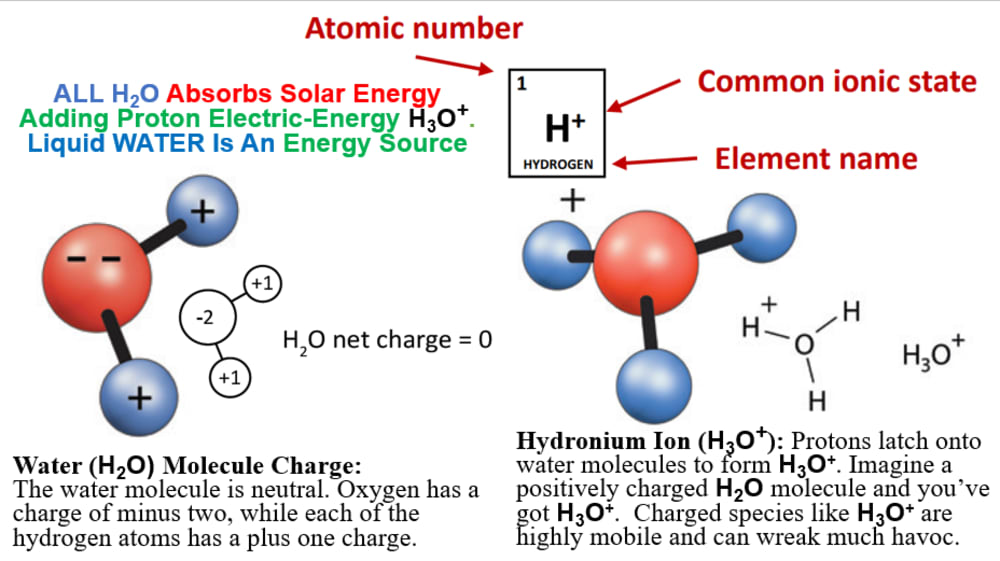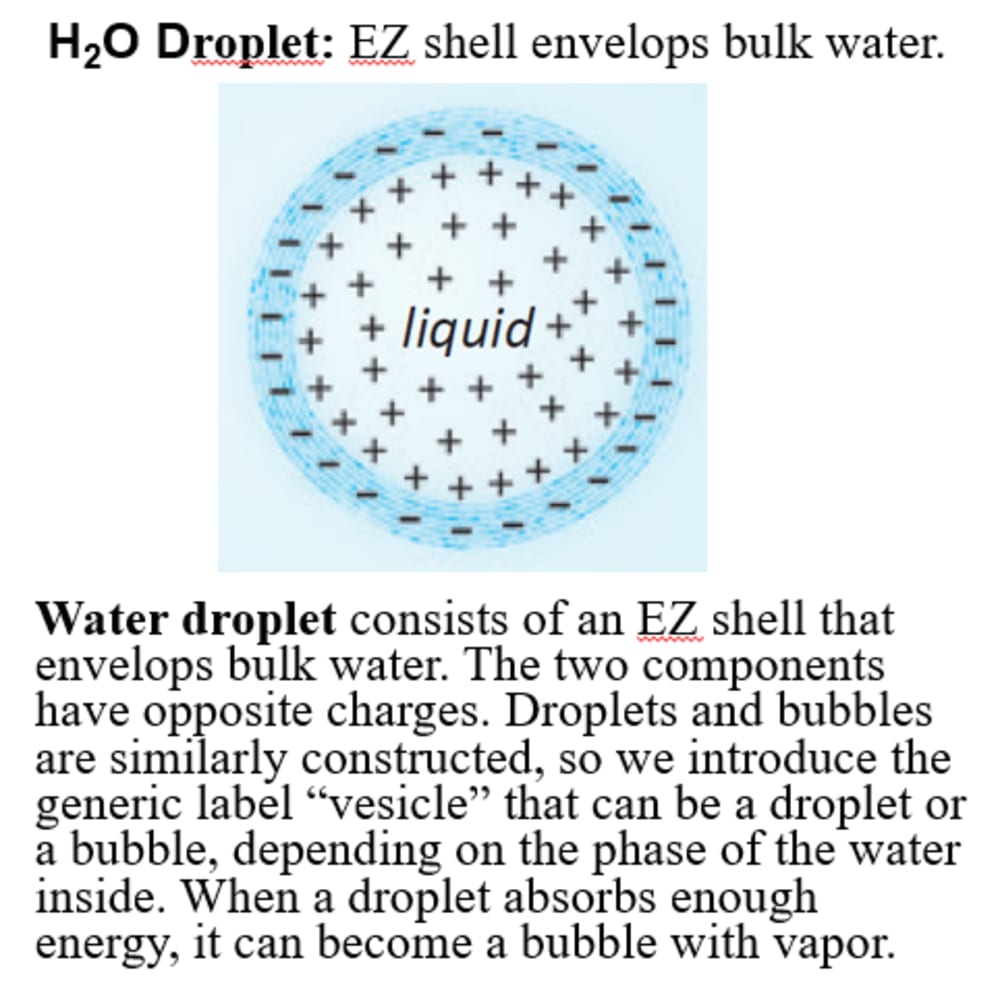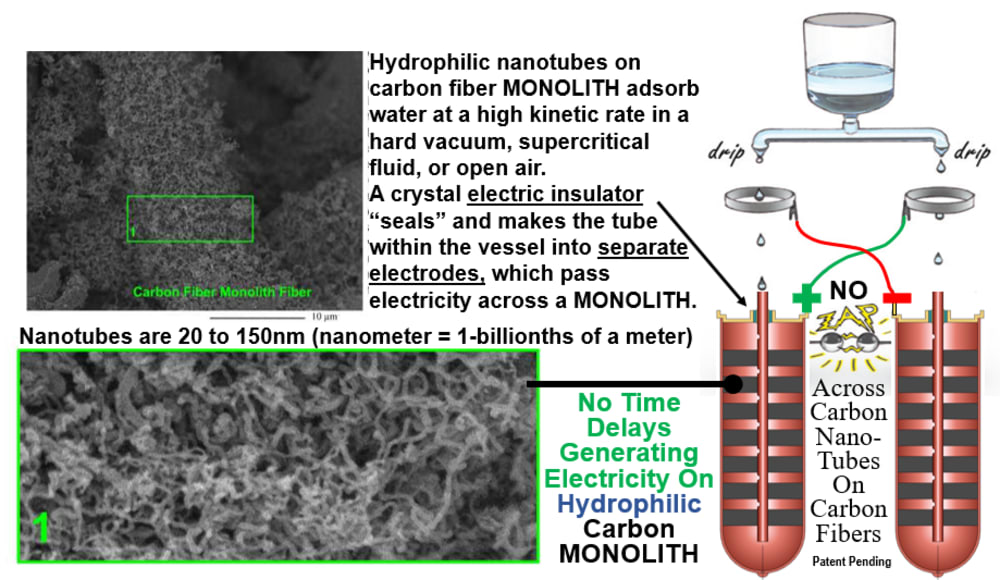1st Picture: ALL H2O Absorbs Solar Energy Adding Proton Electric-Energy H3O+. Liquid WATER Is An Energy Source
Water (H3O) Molecule Charge:
The water molecule is neutral. Oxygen has a charge of minus two, while each of the hydrogen atoms has a plus one charge.
Hydronium Ion (H3O+): Protons latch onto water molecules to form H3O+. Imagine a positively charged H2O molecule and you’ve got H3O+. Charged species like H3O+ are highly mobile and can wreak much havoc.
2nd Picture: H2O Droplet: EZ shell envelops bulk water.
Water droplet consists of an EZ shell that envelops bulk water. The two components have opposite charges. Droplets and bubbles are similarly constructed, so we introduce the generic label “vesicle” that can be a droplet or a bubble, depending on the phase of the water inside. When a droplet absorbs enough energy, it can become a bubble with vapor.
3rd Picture:
Hydrophilic nanotubes on carbon fiber MONOLITH adsorb water at a high kinetic rate in a hard vacuum, supercritical fluid, or open air.
A crystal electric insulator “seals” and makes the tube within the vessel into separate electrodes, which pass electricity across a MONOLITH
Nanotubes are 20 to 150nm (nanometer = 1-billionths of a meter)
No Time Delays Generating Electricity On Hydrophilic Carbon MONOLITH
NO electric Zap Across Carbon Nano-Tubes On Carbon Fibers
Patent Pending
Like this entry?
-
About the Entrant
- Name:David Zornes
- Type of entry:individual
- Software used for this entry:Rhino CAD Ansys
- Patent status:pending








